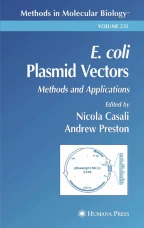
A common step in cloning experiments is the purification of DNA fragments prior to ligation. Often, both the insert and vector DNA fragments will be derived from restriction endonuclease digests and, thus, will be mixed with enzymes, salts, and possibly other DNA fragments that may inhibit the ensuing ligation reaction. A simple solution to this problem is to purify the DNA fragments of interest. This often involves agarose gel electrophoresis to separate mixtures of DNA fragments, followed by extraction of the DNA fragment of interest from the gel. The importance of this step is obvious from the fact that every vendor of molecular-biology products produces a gel extraction kit. Most of these kits utilize a chaotropic agent, such as sodium iodide, to destabilize the agarose gel. The DNA is subsequently bound to a substrate (e.g., an anionic resin) and washed to remove impurities prior to elution of the DNA from the substrate. Other methods include hot phenol extraction of the DNA from the gel. The use of phenol is best avoided if possible because of safety and waste disposal concerns. Presented here are two alternative techniques that avoid these concerns, do not require the purchase of a specialized kit, and are simple to perform.
This is a preview of subscription content, log in via an institution to check access.

© 2003 Humana Press Inc.
Downey, N. (2003). Extraction of DNA from Agarose Gels. In: Casali, N., Preston, A. (eds) E. coli Plasmid Vectors. Methods in Molecular Biology™, vol 235. Humana Press. https://doi.org/10.1385/1-59259-409-3:137